
Balenciaga dedicates Autumn Winter 2022 show to the climate crisis and the war in Ukraine
Fashion brand Balenciaga showed its Autumn Winter 2022 collection in a "snow globe", with models walking the runway in a blizzard as a comment on both the climate crisis and the Ukraine war.
The Paris Fashion Week show was designed by the luxury label's frequent collaborator, Niklas Bildstein Zaar of architecture studio Sub, as a human-made blizzard within a cylindrical, glass-walled structure.
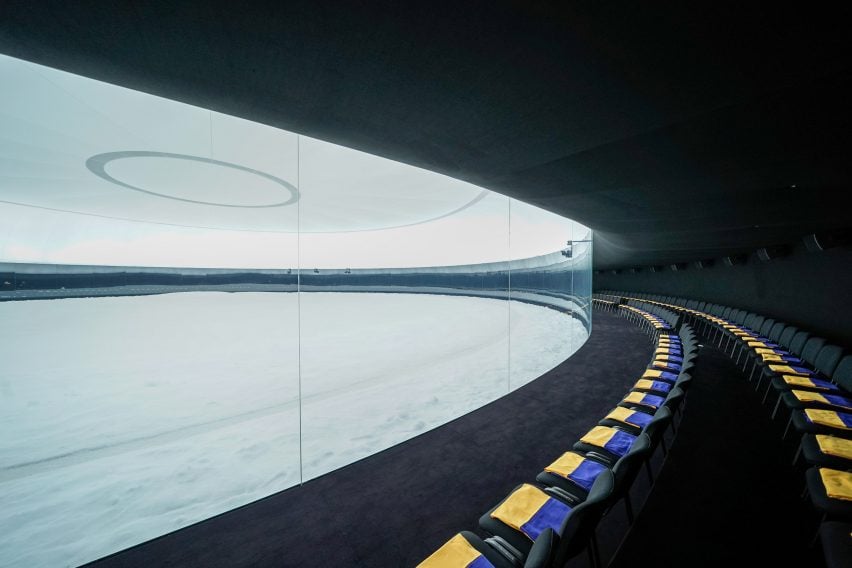
The set design for the show was created in reference to the ongoing climate crisis.
"In a not-so-distant future, what was once considered ubiquitous – banal, even – is now rarefied, often only experienceable via simulation," Balenciaga explained. "Weather, for example, is machine-made or rendered digitally; snow is exotic."
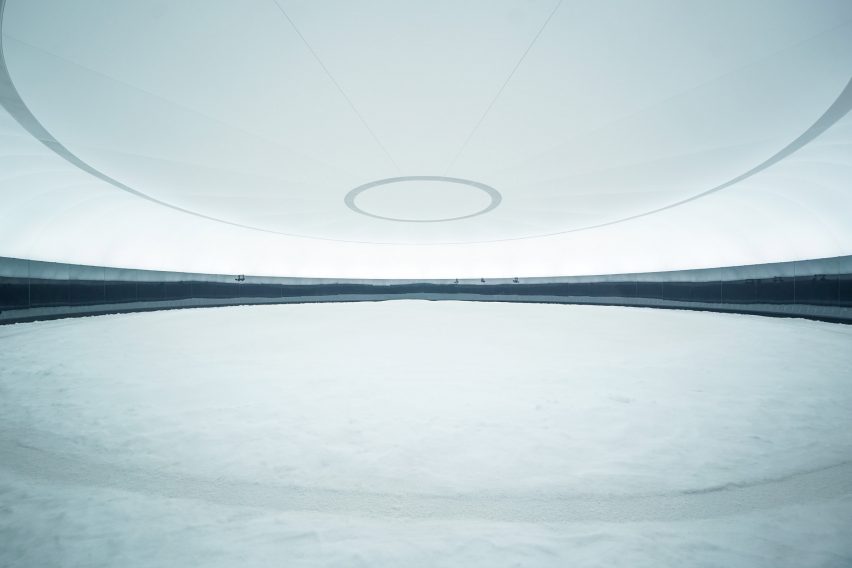
"The term 'winter' takes on a new meaning, although imbued with nostalgia for a time of predictable seasons," the brand added. "Just as a souvenir snow globe preserves a memory, the impending present plays out within a manufactured storm, mapping past winters onto the next."
The show space was shaped as a 360-degree rotunda bounded by a curving glass wall that separated its audience from a man-made snowstorm in a white field.
Set behind the glass wall, the audience was seated within a dark corridor lined with two rows of chairs that were oriented toward the snowy show space and laid with T-shirts in the colours of Ukraine's flag.
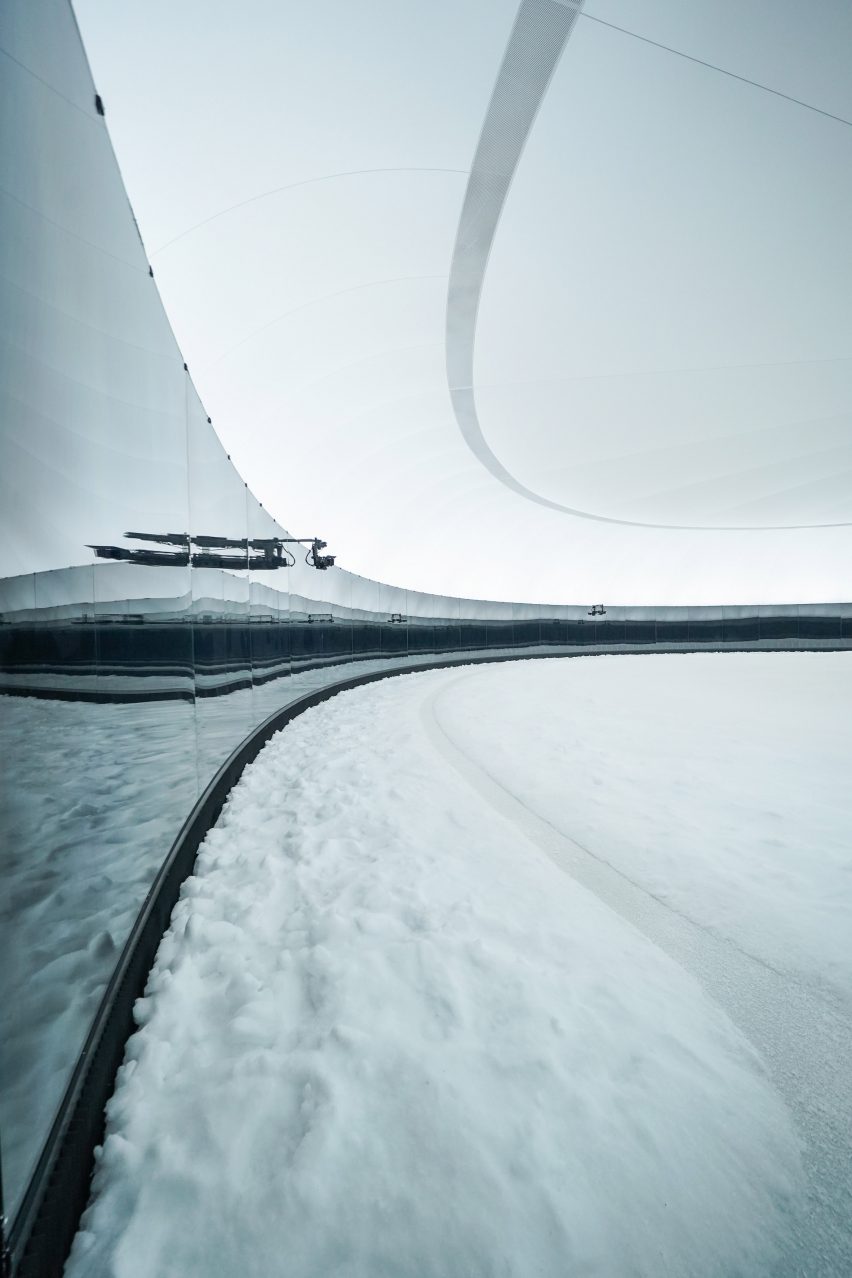
Bright white light, mimicking that of a snowy blizzard, was diffused throughout the rotunda and models were drawn from backstage by wind machines that billowed snow from the ground.
As models toiled through the arctic conditions, the "weather" conditions worsened as the show progressed, with light dimming and flickering to resemble that of a storm.
Models walked against the wind wrapped in towels that barely covered their undergarments, while others appeared holding onto the coloured ties of bags shaped like trash bags.
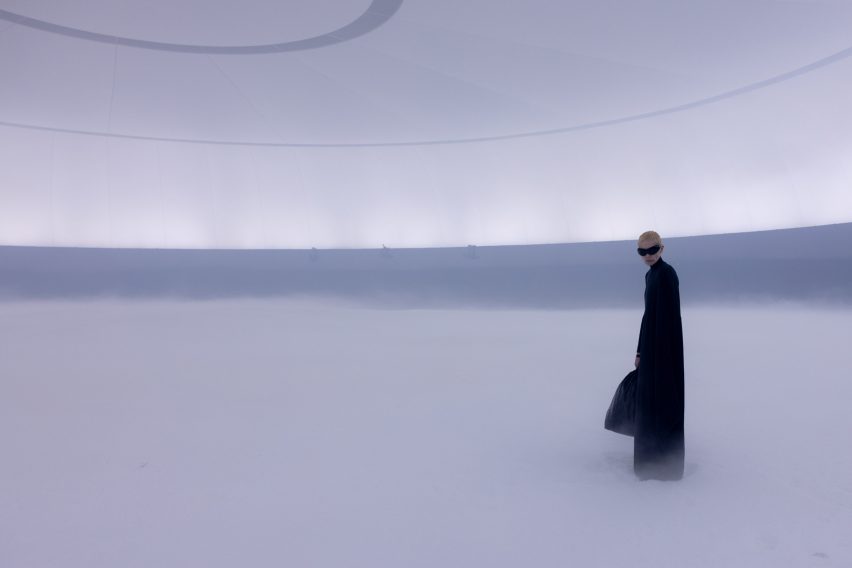
Balenciaga creative director Demna Gvasalia, who goes by Demna, dedicated the show to "resistance," as he said the Ukraine war had triggered past trauma.
"This show needs no explanation, it is a dedication to fearlessness, to resistance, and to the victory of love and peace," said Demna.
The show's theme of displacement was a personal message from the designer, who in 1993 was one of 250,000 Georgians forced from their homes during the Georgian civil war.
"The war in Ukraine has triggered the pain of a past trauma I have carried in me since 1993 when the same thing happened in my home country and I became a forever refugee," said Demna.
"Canceling the show would mean giving in, surrendering to the evil that has already hurt me so much for almost 30 years," he explained. "I decided that I can no longer sacrifice parts of me to that senseless, heartless war of ego."
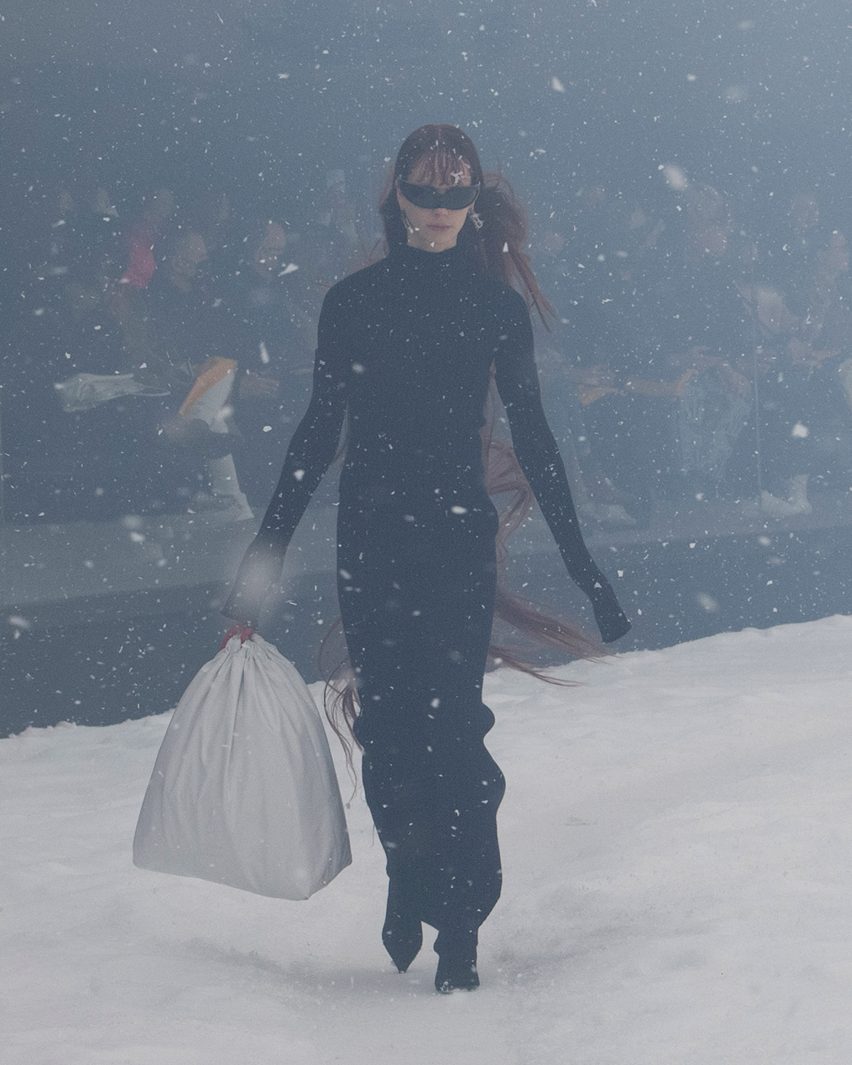
Among the pieces seen at the show were a floor-length leather coat crafted from a mycelium-derived leather alternative titled EPHEA, alongside oversized outerwear and tape-wrapped garments.
The penultimate and finale looks were designed in the brightly-hued colours of the Ukrainian flag: a yellow tracksuit and a blue dress in a stretch fabric with a lengthy train.
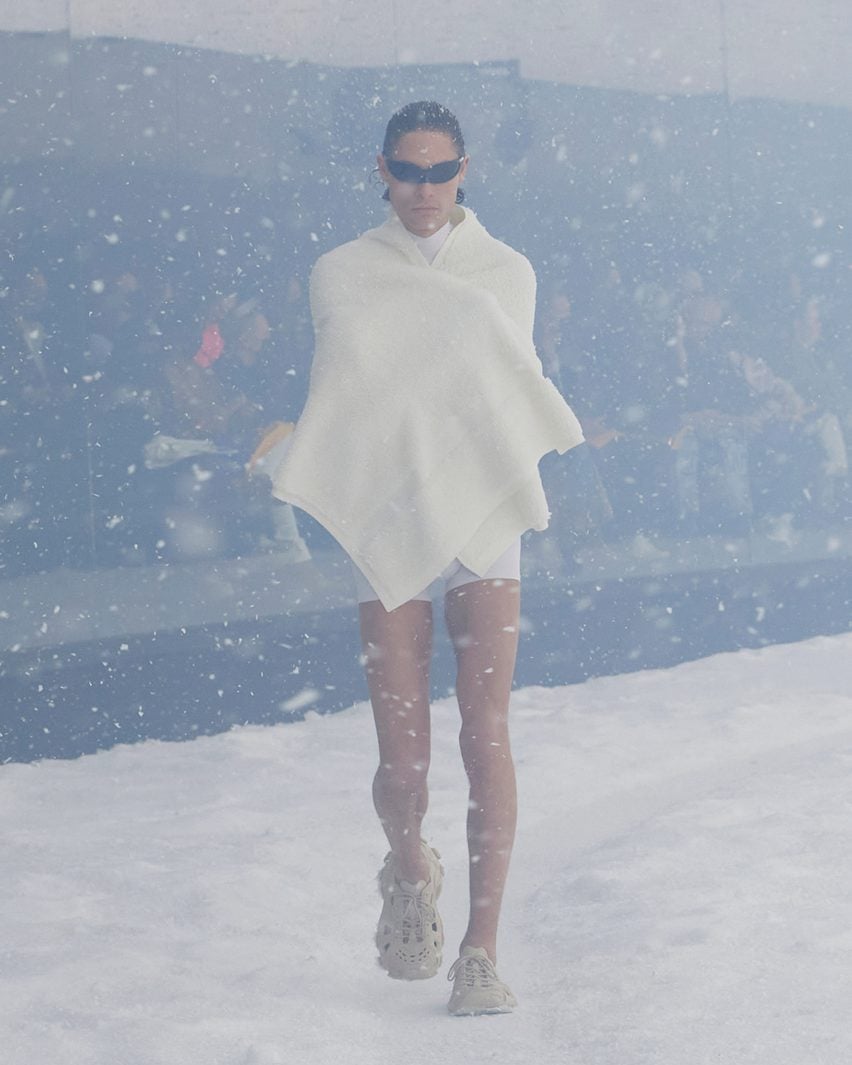
The show marked a return to the runway for Demna's ready-to-wear collections and picked up where Balenciaga's last physical show in March 2020 left off.
It was conceived as a part-two to the "biblical" Autumn/Winter 2020 show, where the audience was met with a sunken and flooded runway, an apocalyptic dress code and images of burning skies.
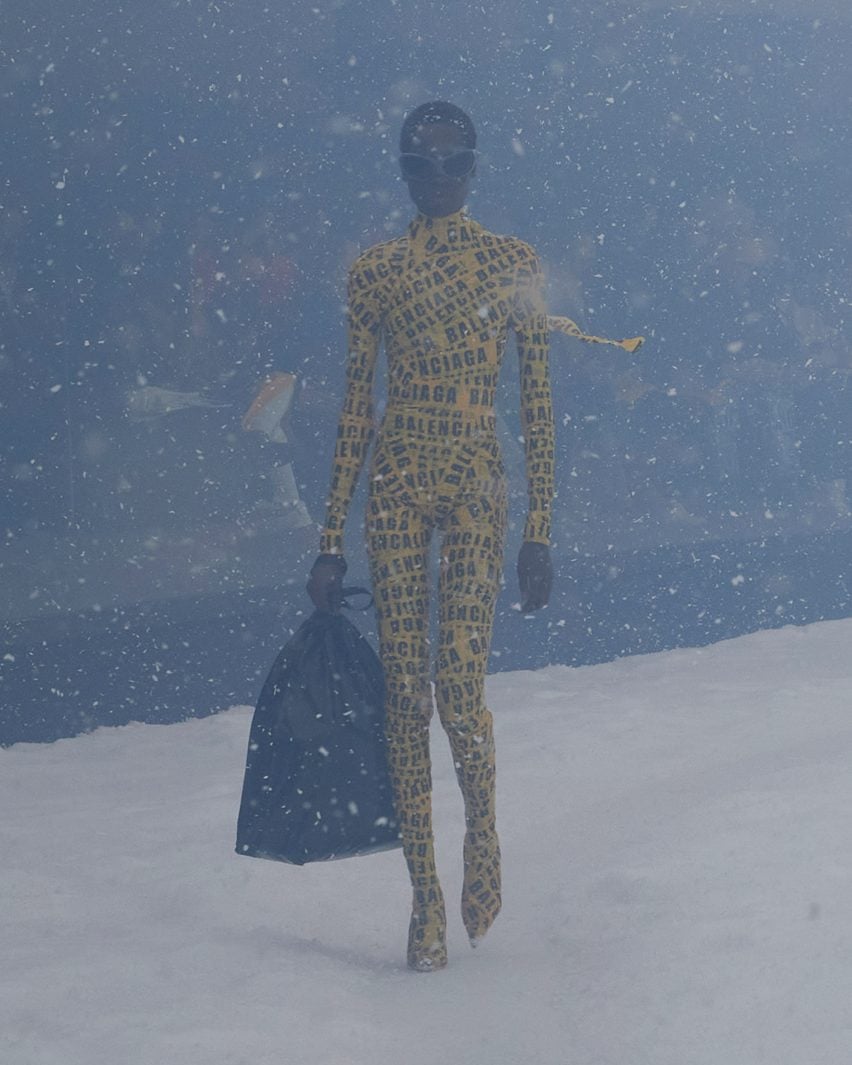
In the lead-up to the Autumn Winter 2022 show, Balenciaga wiped and paused its regular social media campaigns and dedicated the space to information and resources about the conflict in Ukraine.
The fashion house also donated to and partnered with The World Food Programme to provide assistance to those fleeing the conflict.
The war in Ukraine has seen a number of designers, architects and cultural institutions show solidarity with the country following Russia's invasion while an open letter condemning the invasion was signed by more than 6,500 Russian architects, designers and urban planners.
Photography is by Stéphane Aït Ouarab unless stated otherwise.
No comments:
Post a Comment